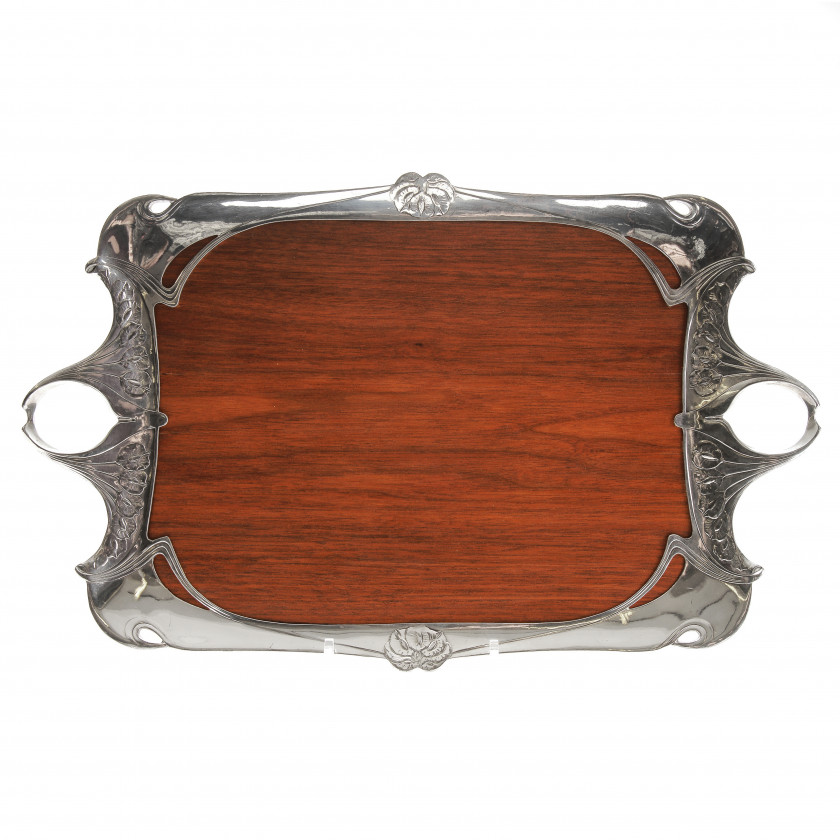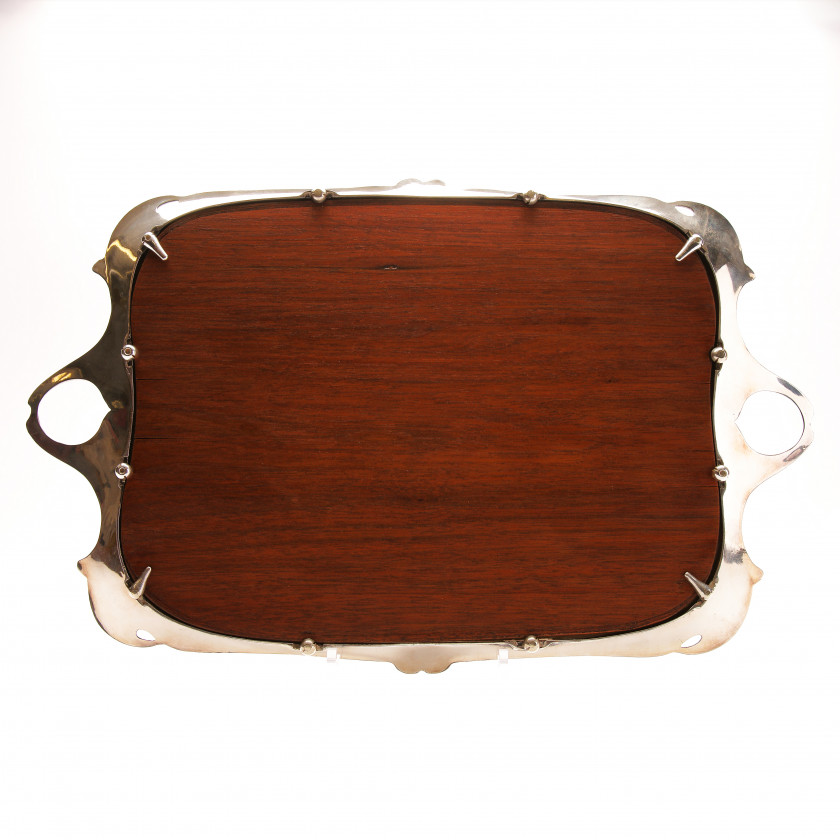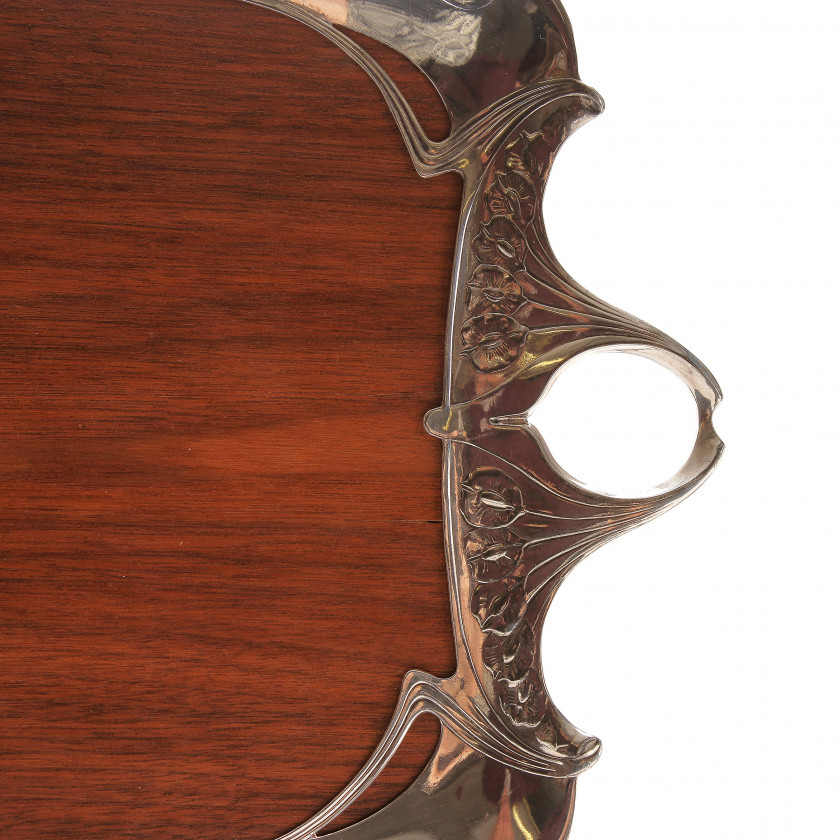Silver plated tray
-
Item has been sold
Artist/Maker: Gallia, Manufacture de L’Alfénide/Christofle
Artist/Maker Dates: 1896 - 1933
Place of Production: France
Date of Production: 1900 - 1915
Materials: metal, silver plating, wood
Style: Art Nouveau
Model Nr.: 4391
Width: 49.0 cm.
Depth: 31.0 cm.
Condition:
Condition notes: Wear consistent with age and use
Description
The first Gallia products were proposed at the end of the XIX. century by Manufacture de L’Alfénide (Alfenide Foundry, where Alfenide is simply another brand name for Alpaca or Neusilber), which was belonged to Christofle since 1888. However, rather than integrating this acquisition, Christofle allowed it to continue trading under its own brand as a separate entity. An experienced French goldsmith, Félix Chéron, was invited to manage the Alfenide factory. Later he was commissioned to create a new line of cheap tin-based silver-plated products. The idea was that such a new enterprise was rather risky for Christofle, who at that time dominated on the French market of luxury silver-plated products, and it was decided to introduce the new product under the name of Alfenide. Therefore, on all newly-produced Gallia items the Alfenide mark for silver-plating, a profile of a goat inside a rhombus in a square box, was used. However, once the production proved to be successful, the Alfenide mark on Gallia objects disappeared and instead the Christofle mark for silver-plating was used.
Gallia is the brand name of the copper-tin alloy, which had been patented by Félix Chéron as early as in 1896. The exact chemical content of this alloy is unknown, but it probably contained also antimony and bismuth. The items made of this alloy could be produced directly by casting and used for the creation of more sophisticated relief or more sculptural forms than those based on Alpacca. Using electroplating, it was possible to cover this alloy with silver; however, the quality of a silver coating put on Gallia was lower than that put on Alpacca (Métal Blanc). Félix Chéron immediately used this newly invented alloy for the production of a small series of highly decorative items, often made by distinguished artists and designers. The main purpose of the Gallia line was to satisfy the market with cheaper products and simultaneously to follow the current art tendencies. It is remarkable that nowadays on the world antiques market these "cheap" silver plate items are sold at 3-10 times higher prices than "luxury" Christofle products of the same period. The production continued for seventy years, though the artistic quality of the Gallia items had declined significantly by 1940.
In 1902, Félix Chéron retired and the position at the head of Alfénide/Gallia was filled by Henri Harleux, an engineer from the Ecole Centrale de Paris. He continued the policy of Gallia brand development. In 1916, under a major reorganization of Christofle, Harleux established a workshop for Gallia production in the Christofle factory at Saint-Denis, north of Paris. This was an independent unit under Harleux's direction, which did not have to report to the Saint-Denis management. This unit survived until 1933, when Gallia totally lost its autonomy inside Christofle.
It should be noted, that the name of Gallia alloy looks similar to the old Latin name of the France province in the Roman Empire (Gallia or Gaulle in French). According to the information found on the Internet, the name GALLIA can mean simply the abbreviation of "GALvanoplastie alLIAge" (electroplating alloy). In any case, the marks for Gallia metal items used in the first thirty years of production were based on the profile of the famous "coq gaullois" (Gallic cock).
Shipping details
- Log in to see the cost for shipping this lot to your address.
Shipping methods are determined by item size, type, fragility and specific characteristics.
Shipping costs are calculated based on carrier rates, delivery distance and packing complexity.
Payment details
Doma Antikvariāts accepts the following payment methods:








